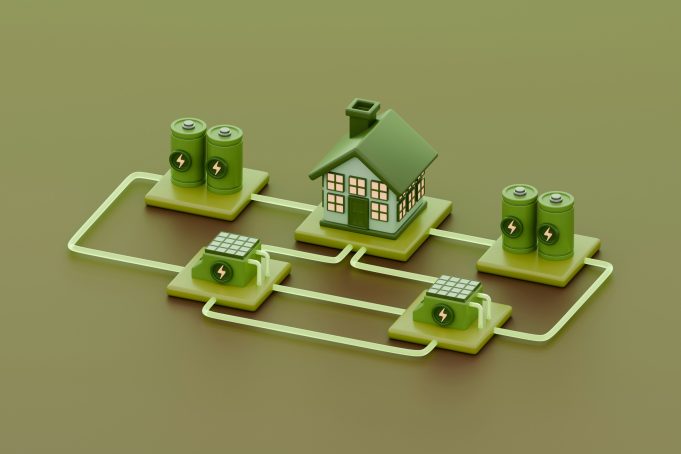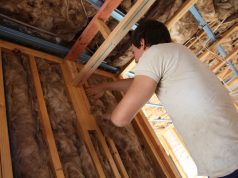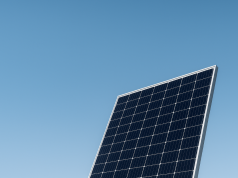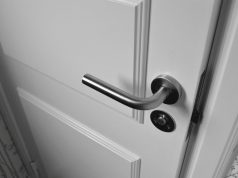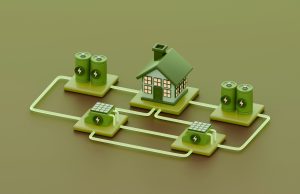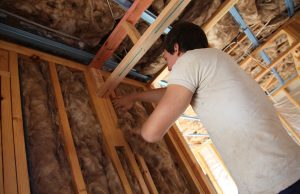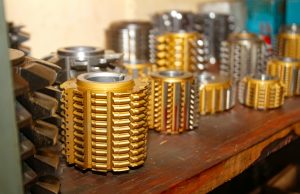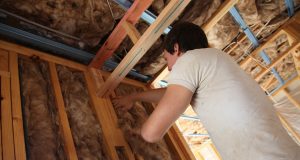Modern flat-pack homes are designed with smart insulation and internal climate comfort in mind, and this designed approach in home building is exactly where you can achieve the highest efficiency with air-to-air heat pump systems. Pairing the two delivers year-round heating and cooling comfort, at impressively low running costs, a light carbon footprint and with far less installation disruption than other heating systems. In fact, with the correct setup and quality insulation, it is possible to get as much as 5Kw of energy back from 1Kw of energy put into the system, making the technology incredibly cost-effective for flat-pack home owners.
What exactly is an Air-to-Air Heat Pump?
You’ve likely heard a lot about A2A technology in the last year, both online and in the press. An air-to-air heat pump system is an all-electric heating and cooling system for properties that harvest energy from the air around us. In winter, it extracts free heat from outdoor air and transfers it indoors; in summer, it reverses the process, expelling heat and cooling your living space. Because it moves energy rather than generating it, an A2A system can typically achieve efficiencies of around 400% and, with quality insulation, up to 500%, producing up to five units of heating or cooling for every unit of electricity consumed.
The Real-World Benefits
For homeowners designing a sustainable, self-contained property, the result is modern comfort that pays for itself over time.
Cold Weather? No Problem
Even when the temperature dips below freezing, there’s still usable heat in the air. Modern air-to-air systems continue operating efficiently down to –15 °C. They occasionally run short “defrost” cycles to clear frost from the outdoor coil, a standard process lasting just a few minutes. Good insulation in flat-pack homes means the system spends most of its time at partial load, maintaining gentle, consistent warmth with minimal energy draw.
UK Summer Heatwaves? No Problem
Flat-pack homes are built to retain heat efficiently, which is excellent in winter, but in today’s warmer UK summers, that same insulation can make interiors feel overly hot. As UK heatwaves become more frequent, the ability to cool your home efficiently has become just as important as heating it. That’s where air-to-air heat pumps excel. With a single system, your flat-pack home can switch seamlessly from heating to cooling, keeping rooms comfortable all year-round. The unit reverses its cycle to draw heat out of the indoor air and release it outside, circulating cool, filtered air through quiet indoor fans.
For open-plan or modular layouts, this system is ideal, because it evenly cools large, connected spaces without the clutter or inefficiency of portable air conditioners. The precision of factory-built flat-pack construction also means fewer draughts and leaks, allowing the system to maintain steady comfort levels using minimal energy.
What A Typical A2A Setup Includes
With low running costs, rapid installation, impressive tech, and year-round climate control, air-to-air systems have established themselves as the most attractive heating and cooling solution for modern UK homes, making them perfect for flat-pack homes.
Why Flat-Pack Homes and Heat Pumps Are Perfectly Aligned
Flat-pack homes and heat pumps share the same DNA, intelligent design, simple use and energy efficiency. When combined, the benefits multiply.
Design & Installation Considerations for Self-Builders
Pairing with Solar and Battery Storage
Flat-pack home owners often want to integrate renewable energy systems from the start. Air-to-air technology pairs beautifully with solar PV, allowing homeowners to use daytime solar power for free heating or cooling. Add a battery storage system, and you can extend that clean energy into the evening, drastically reducing reliance on the grid.
Paul Warner, the owner of WarmVent, the Midlands leading A2A installers service, explains “When solar panels and air-to-air heat pumps work together, you get the ultimate low-carbon comfort system, powered by the sun, saving you money all year.”
Planning & Compliance in Brief
Most installations fall under permitted development in England and Wales, provided;
Always confirm with your local authority or ask your expert installer before work begins, especially in conservation areas or shared developments.
A Perfect Partnership
Flat-pack homes represent the exciting future of British housebuilding, fast, efficient, and sustainable. Air-to-air heat pumps embody the same principles. Together, they can form a symbiotic partnership, precision-built homes powered by precision-engineered climate technology.
WarmVent are specialists in air-to-air heat-pump technology and all-electric climate solutions for UK homes. You can learn more about air-to-air heat pumps here and even book a free survey for your home.

